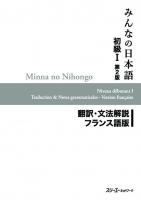

With Minna no Nihongo Chukyu, the learner is taken to the next step - consolidating what he/she learnt in the Shokyu series and building on this to become a more fluent communicator at the lower intermediate level. Through accumulated study, the learner will build up and develop his/her basic speaking ability.< To see other lessons, please click here.These books will enable the general adult learner to make simple conversation (Minna no Nihongo Shokyu I) or more advanced conversation (Minna no Nihongo Shokyu II) in daily life situations. The above is all knowledge about Vocabulary and Grammar of Minna no Nihongo lesson 1. The listener’s family name followed by さん is usually used. Report 'Minna no Nihongo I Second Edition Translation and Grammar Notes Thai 4883196445. This is the translation and grammar notes to be used with Minna no Nihongo Shokyu I Dai 2-Han Honsatsu (Minna no Nihongo. When referring directly to the listener’s name. Minna no Nihongo I Second Edition Translation and Grammar Notes German 4883196399, 9784883196395. It should never be used with the speaker’s own name. さん is added to the name of the listener or a third person to show the speaker’s respect to the person. Minna no Nihongo 1 - Translation & Grammatical Notes Thai version - Japanese Language Study Book by 3A Network Hardcover, 181 Pages, Published 2013 by 3A.

In Lesson 1, N 1 is an organization or some kind of group to which N 2 belongs. も is added after a topic instead of は when the statement about the topic is the same as the previous topic. The word order does not change, and か is added at the end. Depending on whether you agree with the statement or not, your answer to such a question begins with はい or いいえ.Īn interrogative replaces the part of the sentence that covers what you want to ask about. The question thus made asks whether a statement is correct or not. A question ends with a rising intonation.Ģ) Questions asking whether a statement is correct or notĪs mentioned above, a sentence becomes a question when か is added to the end. A question is formed by simply adding か to the end of the sentence. The particle か is used o express the speaker’s doubt, question, uncertainty, etc. For a formal speech or writting, では ありません is used instead. It is the form used in daily conversation. below) or in the past tense (see Lesson 2)
MINNA NO NIHONGO THAI FREE

You select a noun you want to talk about, add は to show that it is the topic and give a statement about the topic. The particle は indicates that the words before it is the topic of the sentence.

Usually used at the end of a self-introduction) Usually used as the first phrase when introducing oneself) How old (おいくつ is is the polite equivalent of なんさい) Teacher, instructor ( not used when referring to one’s own job)Įmployee of…company (used with a company’s name) This minna no nihongo thai, as one of the most practicing sellers here will enormously be in the course of the best options to review. Suffix added to child’s names instead of ~さん


 0 kommentar(er)
0 kommentar(er)
